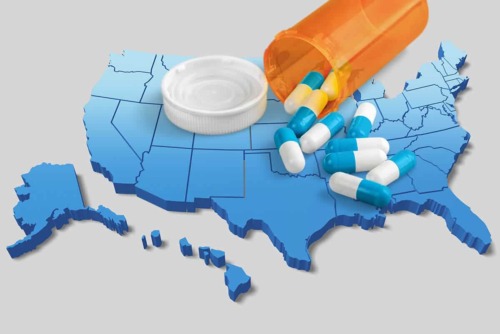What Caused the Opioid Epidemic and How to Meet Its Challenges

Each year, tens of thousands of people die due to the opioid epidemic. For each person who dies from an overdose, there are hundreds more who survive because of the lifesaving medication Narcan. Although most first responders now carry this overdose-reversal medication, we need solutions to help people who are struggling with an opioid addiction. Although many people know that their addiction is hurting them and their loved ones, they don’t know how to stop their substance abuse. Understanding the current crisis can help you begin to find solutions.
What Started the Opioid Epidemic?
Chronic pain is a horrible experience for anyone who lives with it. Many people suffer from chronic pain due to various diseases or lifelong injuries. Medical professionals also do their best to help people manage their pain after surgery or injury. So, when Purdue Pharma came to market with the medication Oxycontin, it sounded too good to be true — and it was. Although Purdue marketed Oxycontin, a powerful opioid, as a pain medication that was nonaddictive, it didn’t take long for it to prove otherwise and fuel the opioid epidemic.
According to opioid epidemic statistics from the National Institute on Drug Abuse, 75% of heroin addicts started with prescription opioids. These medications can help with pain, but they’re also highly addictive. After taking these medications on a regular basis, the person develops an addiction to the high of the drug rather than the pain relief. Due to the person’s tolerance, they start to need more of the medication to get high and feel the relief. The dependence to the substance also makes it difficult to stop because of the symptoms of withdrawal.
Over the last two decades, some doctors prescribe these potentially addictive medications far too often. Those who don’t even have symptoms of pain can sometimes easily obtain these drugs. So, many people who are looking for a recreational high can easily obtain and get hooked on these medications. Whether the person has chronic pain or not, opioid treatment is necessary for a person to regain control of their life.
How to Get Help for an Opioid Addiction
The current state of the epidemic can leave people feeling hopeless. It’s easy to slip into the belief that if you have an addiction to these drugs, there’s no way out, but there is. Treatment can help you get sober and stay sober. The first step in the process is to go through a medical detox program. The symptoms of opioid withdrawal can be extremely harsh and potentially dangerous. A medical staff that specializes in opioid detox can help you come off of the drug safely and comfortably. The team will monitor you frequently to ensure that you’re all right, and medications like Suboxone can significantly decrease the symptoms of withdrawal.
Detox is only the first step of the process. In order to avoid relapse and achieve long-term sobriety, inpatient treatment is the best option. Working with drug and alcohol addiction specialists can help you learn why you turned to drugs in the first place. You may have done so to manage feelings and emotions, but there are much healthier coping skills that you can learn. For those struggling with chronic pain, pain management programs can help by getting to the root of the pain and assisting in your recovery.
What’s Next?
If you’re struggling with an addiction to opioids and are ready to take back control of your life, allow us at Kemah Palms Recovery® to help. Not only do we provide detox and inpatient treatment services, but we also specialize in chronic pain management. We have a caring and compassionate team that’s here to provide you with solutions that can help you get sober and stay sober. Through various forms of individual and group therapy, you can discover that recovery is possible. If you’re ready to get on the right track and start healing, contact us today today.
